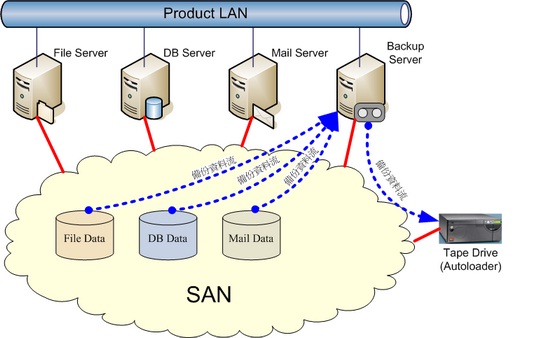There are a few distinct ways for people and corporations to approach data backup. “The cloud” has the allure of being a relatively new technology and offers easy, offsite data security in the event of an internal system breach. However, when it comes to the security of actually possessing the physical backups of data, which many companies need for security and insurance purposes, using internal backup SAN and storage NAS configurations is usually the best strategy. There are a few basic elements of every effective data backup and disaster recovery system that use these kinds of storage arrangements.

Obviously, from a practical standpoint the most important component is the device or array of devices that will store the data. Although there is a range of options from solid state drives to multiple different form factors of SATA and SAS drives, the way they are integrated for data storage is often just as important. For a corporation that opts to house its data onsite, the choice between a backup SAN and storage NAS-based system depends on necessary storage capacity, access speed, availability, and physical space concerns. In fact, one of the biggest decisions with any data storage system is physical location. Because hard drives are susceptible to damage from the elements, any kind of physical disaster can threaten the backup, so keeping the data center in a part of the building that stays cool and dry can significantly reduce the risk of certain threats to the system.
This is why many corporations opt to put their entire IT department on the top floor, and storage devices should be treated the same way. Many also want a secondary backup at an offsite location miles away. This provides extra security against disasters, as they tend to effect limited geographic regions, and can also increase security if partial backups are stored at multiple sites, because this means a security breach at one site won’t compromise all the sensitive data.
The second component is the storage software. Depending on how you plan to manage your data, various software solutions can be set up to automate the process. This relates directly to the company’s usage needs. Considerations ranging from the source of the data for backup to how often backups need to be made to the way the backup data will be accessed by server-based applications all impact the decision for the software behavior.
The last element is security. This is often a component of software, but should be thought of separately from the data management software that administers the backup system. With onsite data storage, the two main concerns are keeping employees out and, if the networked storage could hypothetically be indirectly be accessed via the internet, preventing that..
When a company begins the process of implementing a data storage and backup system, or even just upgrading its old setup, a number of fundamental decisions need to be made based on that company’s needs and restrictions. And when the ultimate plan involves using onsite data storage options like backup SAN or storage NAS devices, it’s important to understand these basic elements for that system.
Terra writes about technology related issues such as data archiving systems, backup SAN, Nas storage, and tech related matters. To find out more about backup SAN systems visit: http://www.nexsan.com
Backup SAN And The Basis Elements Of A Data Backup System

